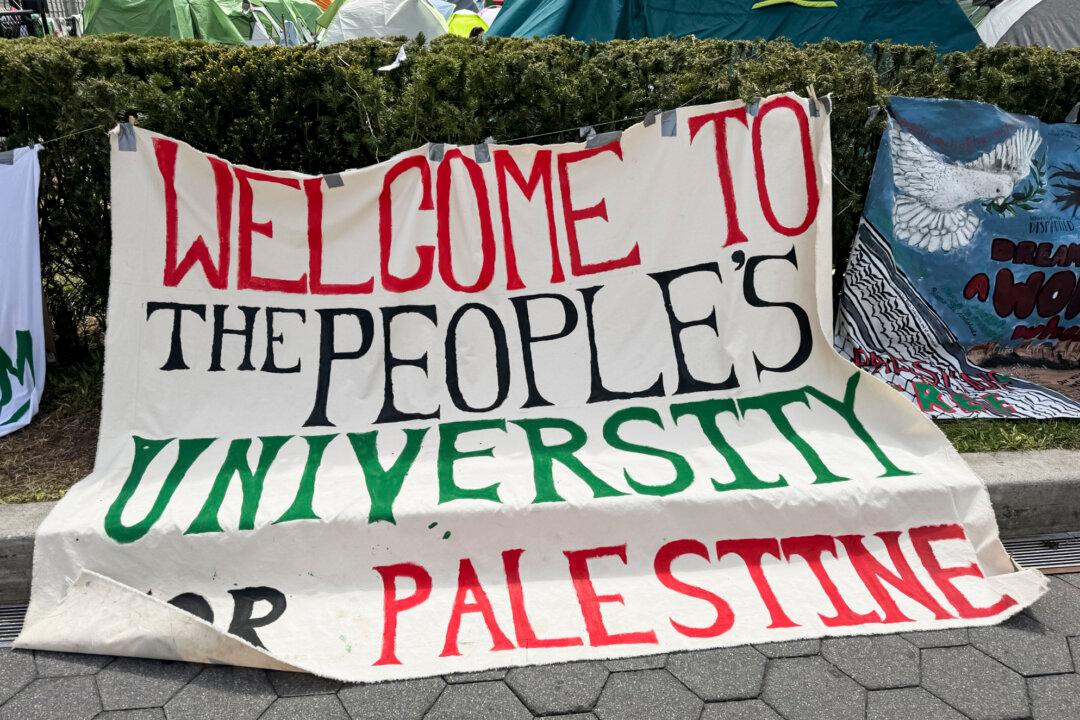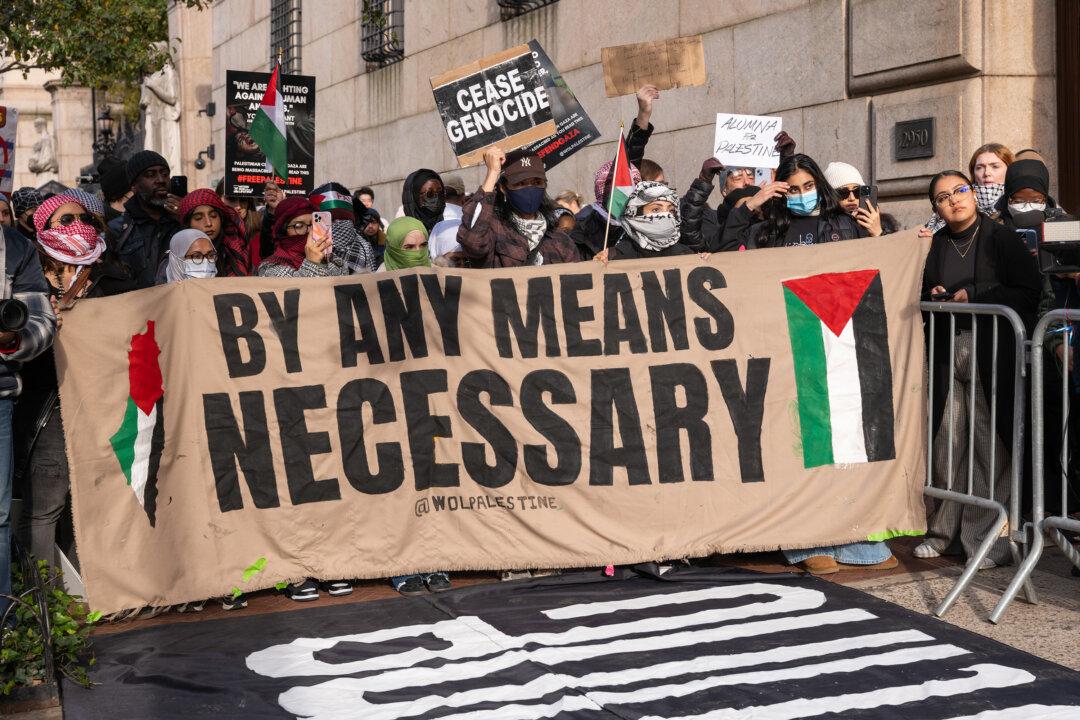Betraying the premises and ethics of anthropology, the American Anthropological Association (AAA) has thrown its weight behind the anti-Israel, anti-Semitic Boycott, Divestment, and Sanctions (BDS) movement. This is the final act in transforming a field of honest academic study into a program of far-left ideology and propaganda.
For most of the 20th century, anthropology defined its purpose as the scientific, objective, and disinterested study of human life, including the study of human evolution, physical variations, languages, and cultures through history and across the globe. What this meant for those of us who specialized in cultural anthropology was that we should, in carrying out ethnographic research on a particular culture, usually through residence in that culture, which we called “fieldwork,” try to understand the culture’s structural characteristics, the ways in which its members pursued their goals, and the reasons for the choices they made.
We were in the business not of judging these cultures, but of understanding them.
When I went to pursue ethnographic fieldwork in southeastern Iran, a desert region called Baluchistan, I wanted to understand why the people chose to live in tents and to migrate repeatedly throughout the year. I also wanted to understand what they intended by organizing into tribes, which they defined by descent through the male line, a patrilineal descent. And why did they have arranged marriages and polygamous marriages, and what did they think of them?
What I learned, and was able to document through direct observation and testimony from community members, was the practical basis of apparently exotic “customs” and rules. In their low-rainfall environment, agriculture wasn’t possible, so the Baluch raised livestock that provided food and raw materials, and they migrated with their communities throughout the year because pasture and water to sustain the animals were scarce and variable over time.
The Baluch formed into tribes that served as regional defense organizations to provide security for the people and the livestock that they depended upon for their living. Marriage was the establishment of the basic productive unit of society and also an alliance between families, so the characters and capacities of the individuals to be married were of primary consideration. Young women said, when questioned about having their spouse chosen by their families, “How would I know who is good?”
The rare polygamous marriages were usually within and between chiefly families, which strengthened tribal alliances.
One part of our job as cultural anthropologists, the part called “ethnography,” was learning about particular cultures. This meant, in addition to objective observations of conditions and behaviors, understanding the culture and society from the point of view of the participants, the actors who made that community what it was. The other part of the job was comparative analysis among cultures, in order to identify what conditions led to certain patterns in one society, while different conditions led to different patterns elsewhere.
For example, while sparse rainfall is associated with raising livestock, sparse population, and tribal organization, heavy rainfall in other regions provided the basis for intensive agriculture, dense populations, and hierarchical state organization. The object of both parts of cultural anthropology is to understand people and their lives around the world.
Academia doesn’t, however, exist outside of the ebbs and flows of culture in its own societies. While there were always countercultural waves in anthropology—in my small department, there were two professors who were committed Marxists and two who asserted that they were communists—from the 1960s there was a tsunami of militant ideologues entering cultural anthropology: feminists whose primary goal was to “liberate” females from “the patriarchy” and to generate ever-increasing waves of activist feminist anthropologists. They succeeded. In my 2017 senior seminar, there were 18 females, no males. My female department colleagues insisted that all future hires would be females. All applicants were vetted for feminist ideological purity. Among cultural anthropologists, females now dominate demographically and politically, just as they do in universities generally.
Feminists having introduced and instituted the neo-Marxist distinction between oppressor and victim gender classes, this dualistic model was now available for all grievance fields, such as black, ethnic, queer, and indigenous studies, which all took it up enthusiastically, denouncing the majority of the population as oppressors and identifying themselves as innocent victims. So joining feminist anthropologists were those from other grievance fields and their militant supporters.
Anthropological theory thus became neo-Marxist oppressor-victim theory, and ethnography became the identification of oppressors and victims. This gave new life to the old Marxism-Leninism, from which arose the most popular “theory” in anthropology from the 1990s, “postcolonial theory,” which blames all the ills of the world on Euro-American imperialism and colonialism. This extraordinarily simplistic understanding of the world underlies the vicious denunciation of Israel widespread in academia. Add to this the imaginary identification of Israelis with “whiteness” and Palestinians as “people of color,” and today’s race hate is mixed into this noxious brew.
How exactly did the AAA decide to target Israel? There are the usual BDS postcolonial accusations of Israel being a colonial settler state, of Israel engaging in genocide against the Palestinians, and of Israel applying racist apartheid policies against the Palestinians who are allegedly the indigenous population. In this portrayal, no mention is made of Israel, including Judea and Samaria (the “West Bank”), being the ancient home of Jews, who were the indigenous inhabitants when the region was invaded by the Romans, some seven centuries before the Arabs invaded. Is the AAA really that weak on history?
Nothing is mentioned about the ongoing 100-year war by the Palestinian Arabs against the Jews, including massacres and guerrilla attacks, recently including suicide bombers and vehicle attacks. No mention is made of the “pay for slay” assassination campaign of Palestinians against Jews, rewarded by the Palestinian Authority with life pensions, funded by the Obama and Biden administrations. Or the U.N. refugee program that trains Palestinians to hate Jews and aspire to kill them. Palestinian Hamas is even more explicit, promising not only to destroy Israel but also to annihilate Jews around the world. But to the AAA, Palestinians are wonderful examples of innocent victims of oppression.
The AAA boycott is deemed to be antisemitic not only because of its highly biased and unbalanced view of the Palestinian–Israel conflict but also because it applies judgments to Israel that it applies to no other country. Apparently, the AAA finds nothing to worry about in Iran and its worldwide terrorism, not to mention the suppression of its own people, or the Turkish suppression of the Kurds, North Korea’s absolute despotism, China’s imperialism in Tibet, Inner Mongolia, and Xinjiang—the last of which is currently subject to systematic atrocities—or Russia’s imperialistic military invasion of Ukraine.
Anthropologists, it appears, just don’t like Jews.







